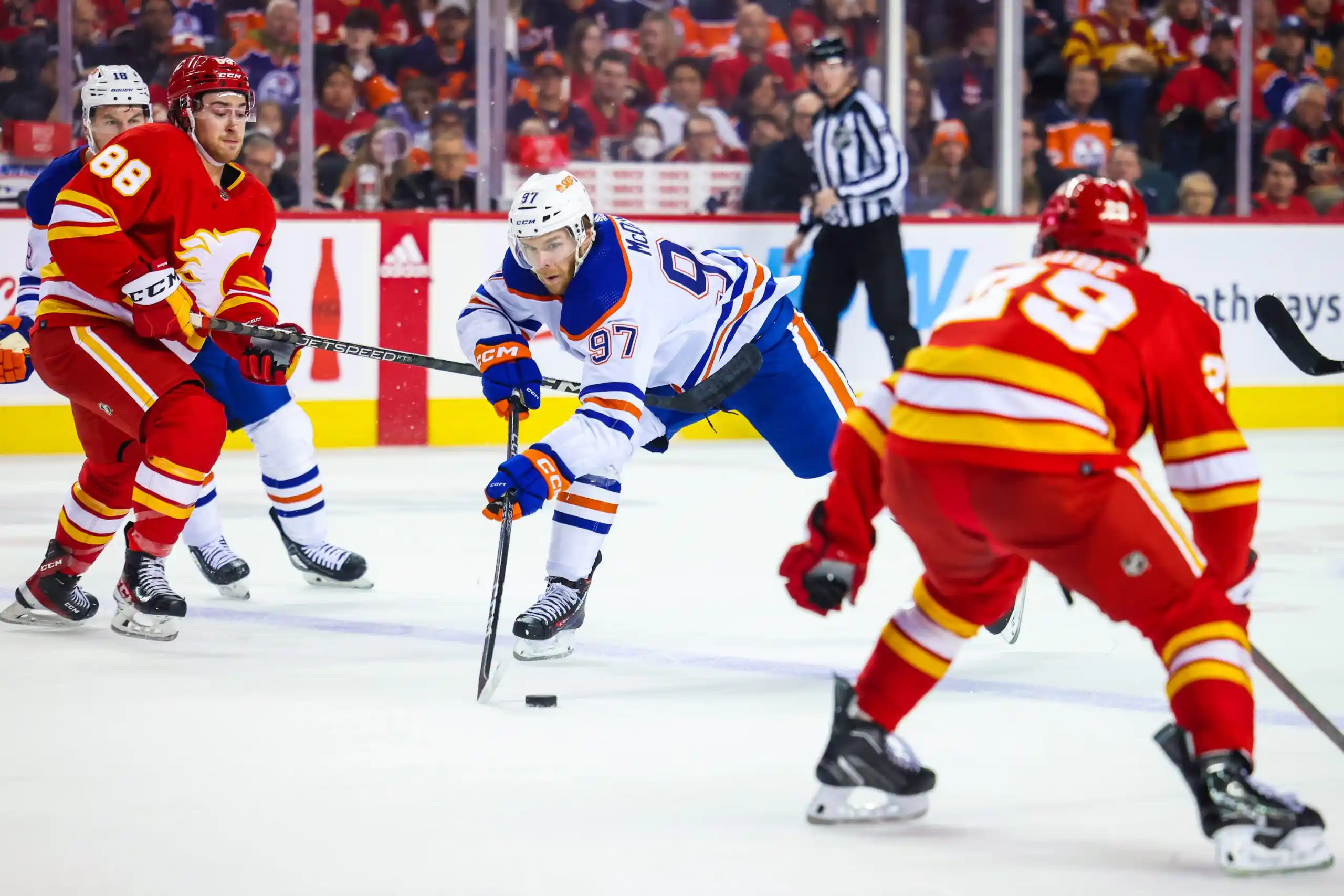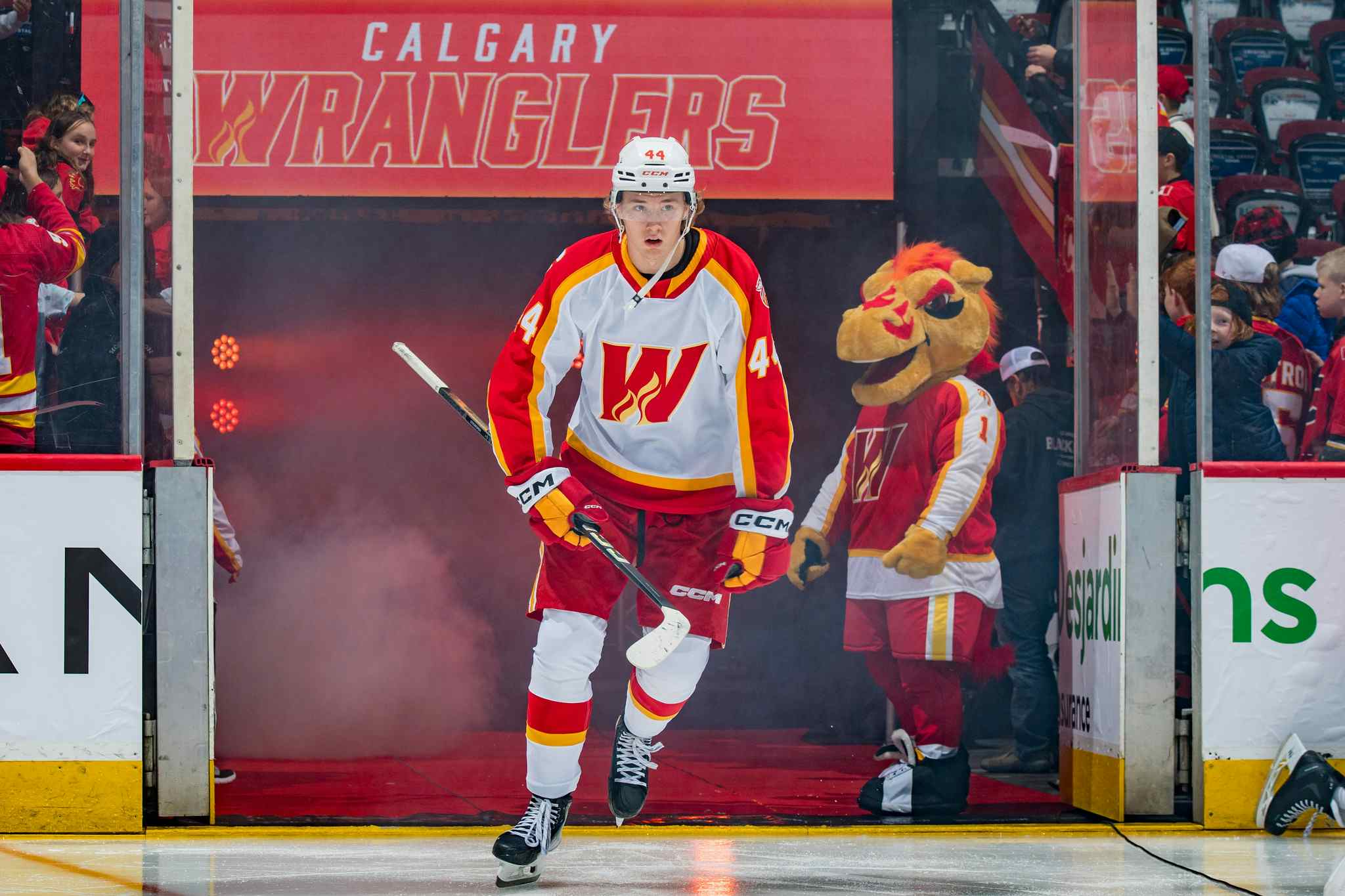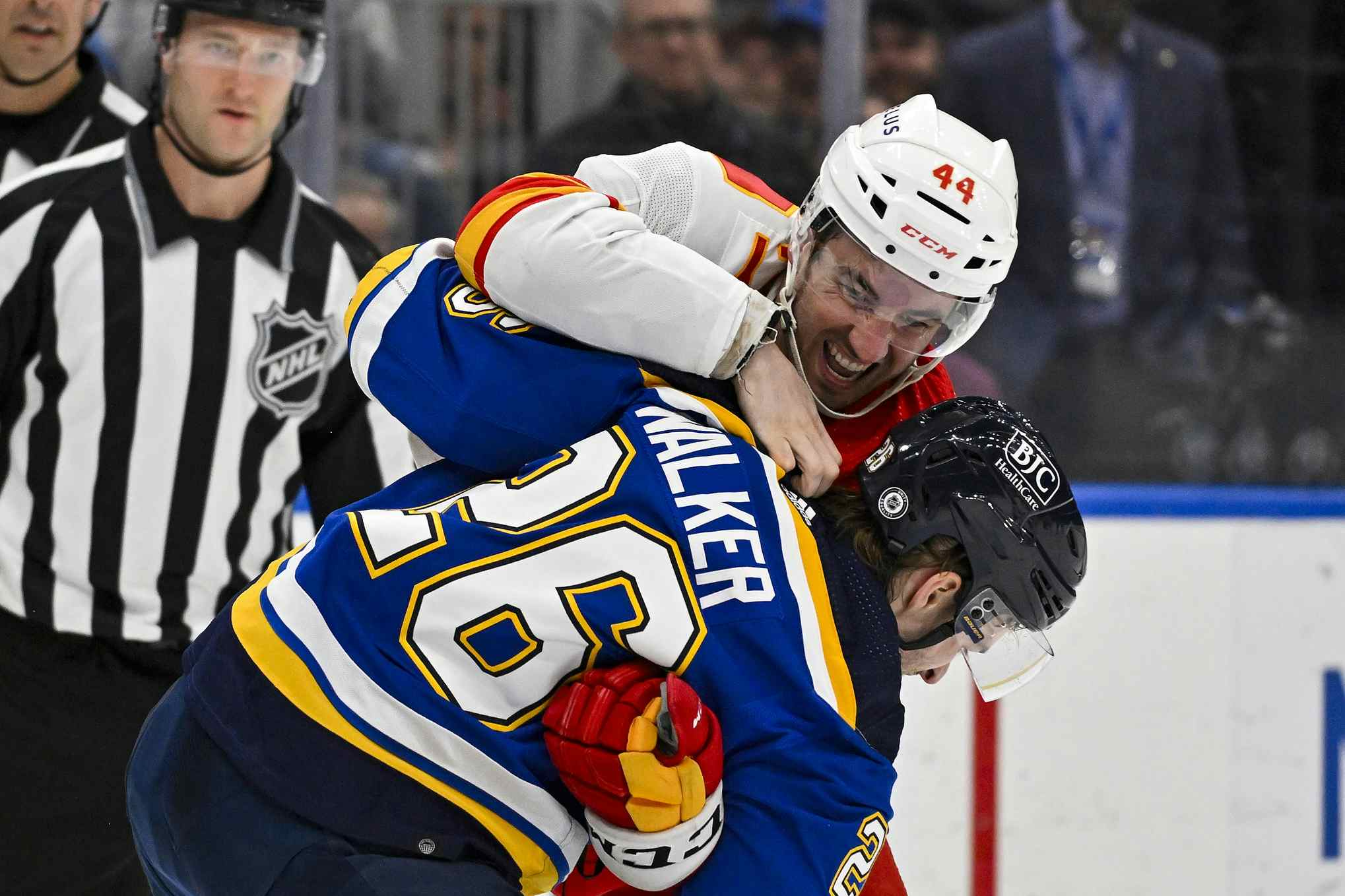On the Burke Hiring
By Kent Wilson
10 years agoIt’s not easy to analyze the recent addition of Brian Burke. We don’t know, for instance, just what his role will entail as the organization’s president of hockey operations. More to the point, we don’t really know how this will affect the current dynamic in the Flames front office. Rumors of an over-involved Ken King have swirled around the team for years and in fact this may be a move designed to short circuit those rumblings, either in fact or merely in perception. It’s also entirely possible he has been tabbed as Feaster’s replacement once the team is ready to compete again and Jay is dumped overboard (as seems to happen to so many GM’s when their team goes through a rebuild).
Burke’s resume in the NHL is long and storied. A former player agent, Burke has been an executive in the league since 1987 and landed his first GM position in 1992 with the Hartford Whalers. He won a cup with the Ducks in 2007 and was the architect of a Vancouver Canucks club that eventually became a dominant force in the Western Conference in the mid-2000’s. The man brings a certain gravitas to the Flames org and there’s no doubt he’s unafraid to ruthlessly pursue players he deems worthwhile.
That said, there’s reasons to be concerned: he’s obstinate, apparently fixated on conventional assessment factors and his overall track record with the Leafs was rather poor.
The Good stuff
If there’s any one thing that recommends Burke as a hockey executive, it’s his ability (and willingness) to wheel and deal. Burke owns some of the biggest thefts in recent memory.
His greatest hits include:
The Sedin Heist
Acquiring the Sedin twins in the same draft through a series of unlikely maneuvers stands as one of the most impressive tricks by a modern NHL general manager.
In his first year as the Canucks big wig, Burke specifically targeted Henrik and Daniel Sedin in the 1999 entry draft, even though the Vancouver Canucks only had one top-5 pick heading into the first round. Both Sedins were tabbed to be chosen inside the top-5 and as most hockey fans are well aware, those sorts of picks are almost impossible to acquire.
But Burke nevertheless wanted both. Because they had played together their entire lives, The Sedins were considered a kind of a unqiue "gestalt" package – both were good, but together they were even better. He acquired 4th overall from Chicago in return for Bryan McCabe and a first round pick the following year (2000). Unfortunately, even with 3rd and 4th overall, there was no guarantee the twins would be around when Vancouver took the podium.
So instead of merely crossing his fingers, Burke moved 4th overall and a couple of third round picks to Tampa for the 1st overall pick. All that was left after that was to flip the first pick to Atlanta for 2nd and a conditional pick, with the proviso that the Thrashers pick Patrik Stefan and leave the Sedins alone. They did (to their ever lasting regret), leaving Brian and the Canucks to choose Daniel and Henrik second and third overall respectively.
It’s a move that still positively impacts the Vancouver organization to this day.
The Purloined Pronger
A lot of credit for Burke’s cup ring has to go to Bryan Murray, who did most of the work building the Anaheim Ducks prior to Brian taking the big chair in 2005. The core of the deep forward group up front including Corey Perry, Ryan Geztlaf, Dustin Penner, Andy McDonald, Chris Kunitz, Sammy Pahlsson, Rob Niedermayer, etc was in place when Burke replaced Murray.
That said, Brian assembled the Ducks equally impressive cup winning blueline, the crown jewel of which turned out to be disgruntled Edmonton Oiler Chris Pronger who was had for Joffrey Lupul, Ladislav Smid and a first round pick. Edmonton immediately sunk into the mire after the deal whereas the Ducks were legitimately dominant en route to their championship run.
Finding Phaneuf
The end of the Sutter era in Calgary was more or less guaranteed when Darryl sent Dion Phanuef to Burke and the Maple Leafs for a collection of magic beans. Phaneuf never quite developed into the perennial Norris trophy candidate many expected earlier in his career, but he continues to be the top tough minute defender on the Toronto blueline to this day.
As for the Flames, the only thing remaining of the ill-fated package of players they got in return (Ian White, Jamal Meyers, Niklas Hagman and Matt Stajan) is Matty franchise. And that’s only because Darryl Sutter foolishly signed him to a long-term contract a few weeks after Stajan first donned a Flames jersey. His stigma as an icon of failure Calgary may be mostly bas ed on poor luck and circumstance, but Stajan remains a remarkably poor, lone remainder of a trade that involved the best Flames prospect in at least a decade at the time.
What’s perhaps most amazing about that deal is the fact that Burke didn’t give up a single future asset in return for what was considered one of the premier young defenders in the league at the time. In fact, Calgary was somehow the party who surrendered a prospect (2007 4th rounder Keith Aulie, whom the Leafs later flipped for former first rounder (!) Carter Ashton).
A lot of folks started taking advantage of a desperate Darryl Sutter at that point of his time in Calgary, but there’s no question Burke is the one who really took him to the cleaners.
A Kingdom for Kessel
Burke’s acquisition of Phil Kessel was impressive in conception if not result. The Leafs were a rebulding team desperate for talent when Burke made noise about giving the young RFA hold-out an offer sheet in the summer of 2009. A 36 goal scorer at 22 years old and former 5th overall pick, Kessel was battling with the Bruins over his next contract when Burke decided to make his move. The threat of an offer sheet was never carried out, but he convinced the Bruins to deal Kessel for a package similar to what they would have recieved as compensation for an offer sheet anyways: a first and second round pick in 2010 as well as an additional first rounder in 2011.
Of course, the move turned out to be a gross miscalculation on Burke’s part. Although Kessel has indeed been the Leafs best forward since he arrived, he wasn’t enough to turn the ship around single-handedly. The deal cost Toronto 2nd overall (Tyler Seguin), 9th overall (Dougie Hamilton) and 32nd overall (Jared Knight), which is an enviable collection of young talent – even in the wake of Seguin’s "issues" in Boston.
The gambit – or at least, Burke’s ability to target and acquire a high priority player – is worthy of some admiration, even if his reach exceeded his grasp in this instance.
A non-trivial portion of running a hockey team is the ability to negotiate trades and strong arm opponents into deals. Although Jay Feaster is still the general manager of the Calgary Flames, I don’t doubt Brian will be an active participant when it comes to trade talks.
The Other Stuff – Intangibles and Leafs Failures
Aside from his candour and bluster, Burke is perhaps best known for his opposition to advanced stats.
"Everybody is looking for these ‘Moneyball’ breakthroughs. … I have yet to see anything that has value in terms of an alternative way of evaluating players." "This whole ‘Moneyball’ thing aggravates me anyway. … Nobody has ever won a championship with Moneyball," Burke said.
That’s via the MIT Sloan sports analysis conference from 2012, to which both Burke an Mike Milbury were (bizarrely) invited. As Katie Baker put it when she covered the event for Grantland at the time:
It was a nuanced discussion about the iterative processes through which huge, hundred-million-dollar franchises select, analyze, project, and develop the assets that are the cornerstone of their businesses. The panel explained how, given the advances in all aspects surrounding the sport — ranging from training equipment to camera technology to the rise in statistical analytics — they’ve been able to add all sorts of new tools to the work they do in evaluating their players’ performance on (and off) the ice.Oh wait, no it wasn’t! It was an hour of phrases like, "You can’t measure heart," and, "I only needed to see him play one shift," and the money line, "Statistics are like a lamppost to a drunk: useful for support, but not for illumination." At times it was impossible not to flash to the scene in the Moneyball film with the old scouts sitting around the table.
Burke has been very public in his opposition to so-called "new" analysis methods, although he has admitted he’s "open" to anything that helps. I’m rather dubious of his self professed amiability since it’s almost impossible to claim there hasn’t been any breakthroughs in terms of data analysis and hockey theory in the last decade or so. At least for anyone who is honestly paying attention.
One of the issues with long established professionals who boast big imposing resumes is there can be a tendency to stop learning to improve. That is, to rest the entirety of their current value on past accomplishments. Like the 40-year old who wears his lettered high school jersey to work every day.
Glen Sather is perhaps the most obvious current day example of this. Made an NHL legend through his days with the Edmonton Oilers dynasty, Sather parlayed that credibility into the New York Rangers GM job – where he’s mostly relied on enormous budgets and name brand player recognition to do his job. If Sather played fantasy hockey, he’d be the guy in your pool who consistently picks players because they have names he knows from highlight packages. The guy you always try to trade with because you understand he’s not paying attention to the guts of the game.
That’s not to say Burke is Sather yet, but a sustained disinterest in new methods of analysis could very well be the mark of a man whose momentum in the league is more inertia than forward motion. The NHL has changed drastically since Burke broke into the league more than 20 years ago. The technology surrounding it, and the subsequent ability to analyze large swaths of data, has grown exponentially and already teams at the junior and NHL level are starting to realize the advantages these advances confer. Burke is by no means a stupid man, but if he’s willfully ignorant there will be little functional difference between one and the other for the Flames organization.
On this point, there is a sliver of a chance that Burke isn’t being entirely honest with the public. Teams and executives don’t tend to share their analytical habits too freely with the fans or press, preferring instead to hold their cards close to their vest. Back in 2010, there were some hints that Burke directed clubs were dabbling in proprietary stats programs at the AHL level. It’s hard to say what came of those efforts or even if Burke was the mind behind them since there’s a few degrees of separation, but it’s interesting nonetheless.
Going The Wrong Way in Toronto
On the other hand, there is Burke’s unremarkable tenure at MLSE. Despite the Phaneuf and Kessel trades, Burke didn’t really manage to move the needle in his five years with Toronto. When he took the reins in 2008, the Leafs were coming off a 13th place, 83-point performance. They were a capable possession club in 2007-08, but suffered from lousy percentages, particularly due to terrible goatending. Mats Sundin, Alex Steen, Matt Stajan, Alex Ponikarovsky, Jason Blake, Bryan McCabe and Tomas Kaberle couldn’t quite make up for the dreadful duo of Vesa Toskala and Andrew Raycroft in net.
Between 2008 and Burke’s ouster this past year, the Leafs hung around the eastern Conference basement. Their high water mark (ignoring the lock-out shortened 2012-13 season) was an 85 point finish back in 2010-11 (good for 10th in the East). More worrying is the fact the club’s underlying numbers cratered with Burke at the helm.
Sundin and company were eventually ushered out of town in various ways and for various reasons. As the previous core of the team fell apart, so too did their possession rates. in 2008-09, they dropped to a middling score close fenwick rate of 49.8. By 2010, the Leafs were at 46.39% by the same measure, good for 5th worst in the league. They dropped to third from the bottom the next season and were second last at 44.01% in 2012-13 (the club was saved from another mid-season collapse by high percentages and the fact the season was only 48-games long).
That is entirely the wrong direction for the richest club in the league to head during a rebuild. The table was set for Burke to suffer through hard times when he took over from JFJ given where guys like Mats Sundin and Jason Blake etc. were in their career at the time, but the truth is in spite of his myriad moves and high profile trades, the fundamentals of Burke’s club eroded rapidly during his time there, rather than bottoming out and rebounding.
Although Burke ventually managed to firm up Toronto’s greatest area of weakness (the goaltending), the roster as a whole stumbled. Burke’s focus on toughness and grit resulted in a lot of questionable moves, including the signing of Colton Orr, acquiring a grossly overpaid Mike Komisarek, trading for Garnett Exelby, etc. As mentioned, Burke isn’t only a toughness guy – he also added guys like JM Liles, Kessel, Joffrey Lupul, Clarke MacArthur as well, but overall the correct balance of possession, scoring and toughness completely eluded him during his stay in Toronto.
This should be somewhat disconcerting for Flames fans since the Maple Leafs are perhaps the ultimate test case for hockey management – unencumbered by any sort of budget restraints (aside from the cap), Burke had every opportunity to steer the Leafs in the right direction and build them into a powerhouse.
It didn’t happen – quite the opposite in fact. Although the club made the playoffs last year, they’ll need another generous heap of percentage driven fortune to remain competitive this year given how badly they struggled at controlling shots the last few seasons. Phil Kessel, one of the Leaf’s lone bright spots, may flee for free agency after this season. Grabovski is gone, MacArthur gone and Phaneuf is a season removed from free agency as well.
The Leafs were rebuilding when Burke arrived. They’re still more or less rebuilding now and there’s no obvious date for when they’ll ascend to the league’s upper echelon.
The Cynical Take
There is also the possibility that adding Burke is mostly a Flames PR stunt; the actions of team desperate for credibility since they will be unable to sell on-ice success for an indeterminate amount of time in the near future. If you can’t point to wins on the ice, at least you can point to the long CV’s in the front office.
In the throws of their (still ongoing) rebuilding efforts, the Edmonton Oilers desperately tried to stack resumes in order to seem relevant. Aside from chasing whales in the off-season (Heatley, nylander, Vanek, Penner, etc) there was also the ill-fated hiring of Pat Quinn, a man who even at the time had a far longer history with the game than future in it. I noted at the onset of this article that Burke brings a certain personality and presence to the organization – this, of course, is almost entirely beside the point when judging his merits as an executive, but it’s possible his idiosyncratic brand of charisma is at least one of the reasons he was considered for the position.
It superficially makes sense to collect as many established pros and recognized executives as possible, but the truth is most organizations can only sustain so many visions and loud voices at the top of the ladder before things start to disintegrate and splinter. Resume stacking looks good in the investor package, but it can eventually cause operations side of the business to fall apart.
Here’s hoping none of that is true in this instance.
Conclusion
Brian Burke has spent a lot of time in the league, much of it as a high level executive who could pull off incrediblely beneficial trades for his organizations. That’s the good news. On the other hand, he was unable to meaningfully improve the Leafs in his last front office job, he apparently has little use for new methods of analysis and it’s unclear how well he will fit in to an increasingly crowded Flames font office.
Flames fans have to hope Burke’s strengths will win out over his weaknesses and the various personalities heading the Calgary organization will be able to work harmoniously together.
Recently at FlamesNation
Recent articles from Kent Wilson






